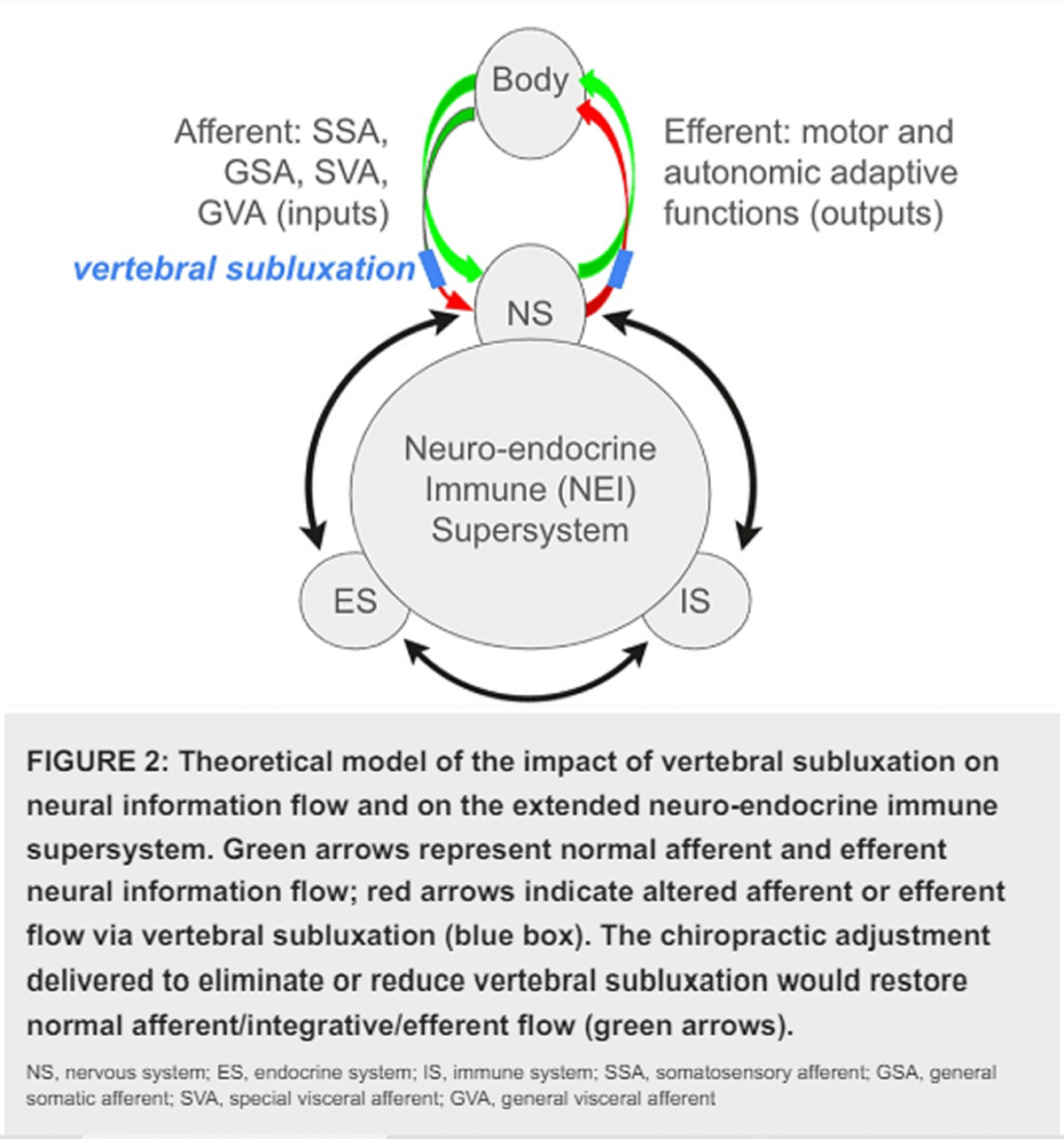Subclinical Neck Pain and the Effects of Cervical Manipulation on Elbow Joint Position Sense
SOURCE: J Manipulative Physiol Ther. 2011 (Feb); 34 (2): 88–97
Heidi Haavik, PhD, BSc (Chiro),
Bernadette Murphy, PhD, DC
New Zealand College of Chiropractic,
Auckland, New Zealand.
heidi.haavik@nzchiro.co.nz
OBJECTIVE: The objectives of this study were to investigate whether elbow joint position sense (JPS) accuracy differs between participants with a history of subclinical neck pain (SCNP) and those with no neck complaints and to determine whether adjusting dysfunctional cervical segments in the SCNP group improves their JPS accuracy.
METHOD: Twenty-five SCNP participants and 18 control participants took part in this pre-post experimental study. Elbow JPS was measured using an electrogoniometer (MLTS700, ADInstruments, New Zealand). Participants reproduced a previously presented angle of the elbow joint with their neck in 4 positions: neutral, flexion, rotation, and combined flexion/rotation. The experimental intervention was high-velocity, low-amplitude cervical adjustments, and the control intervention was a 5-minute rest period. Group JPS data were compared, and it was assessed pre and post interventions using 3 parameters: absolute, constant, and variable errors.
RESULTS: At baseline, the control group was significantly better at reproducing the elbow target angle. The SCNP group’s absolute error significantly improved after the cervical adjustments when the participants’ heads were in the neutral and left-rotation positions. They displayed a significant overall decrease in variable error after the cervical adjustments. The control group participants’ JPS accuracy was worse after the control intervention, with a significant overall effect in absolute and variable errors. No other significant effects were detected.
There are more articles like this @ our:
CONCLUSION: These results suggest that asymptomatic people with a history of SCNP have reduced elbow JPS accuracy compared to those with no history of any neck complaints. Furthermore, the results suggest that adjusting dysfunctional cervical segments in people with SCNP can improve their upper limb JPS accuracy.
Key Indexing Terms: Proprioception, Upper Extremity, Manipulation, Spinal, Central Nervous System, Posture, Chiropractic
From the FULL TEXT Article
Introduction
There is a growing body of evidence demonstrating that adjusting (also known as manipulating) dysfunctional spinal segments can alter central neural function. [1–12] However, it is less certain whether these observed changes in central nervous system (CNS) processing reflect clinically beneficial changes to the individual participants. It has been suggested that these observed changes in sensory processing, sensorimotor integration, and motor control could reflect a mechanism that explains the functional improvements observed after chiropractic care. [6, 10, 12, 13] Our group has proposed that high-velocity, low-amplitude manipulation has a neuromodulatory effect on CNS function. [13] Furthermore, we have proposed that segments of the spine where the movement is functionally restricted in at least 1 plane may represent an ongoing state of altered afferent input that could induce maladaptive neuroplastic changes. [6, 10, 12, 13] The functional segmental restriction could involve restriction in the coronal plane, such as reduced lateral flexion motion, or could include restriction of appropriate movement in the sagittal plane, such as decreased flexion or extension movement. This functional putative manipulable lesion is known by a variety of terms such as joint dysfunction, fixation, or subluxation. It has been suggested in the literature that the maladaptive neuroplastic changes present in long-term pain conditions rather than the actual pain itself are responsible for the individual sufferer’s symptoms and functional disturbances. [14–16] In particular, changes in the way the CNS processes proprioceptive information have been suggested as the most important factor responsible for the clinical presentation of neck pain sufferers. [16]
SOURCE: Read the rest of this Full Text article now!





Leave A Comment